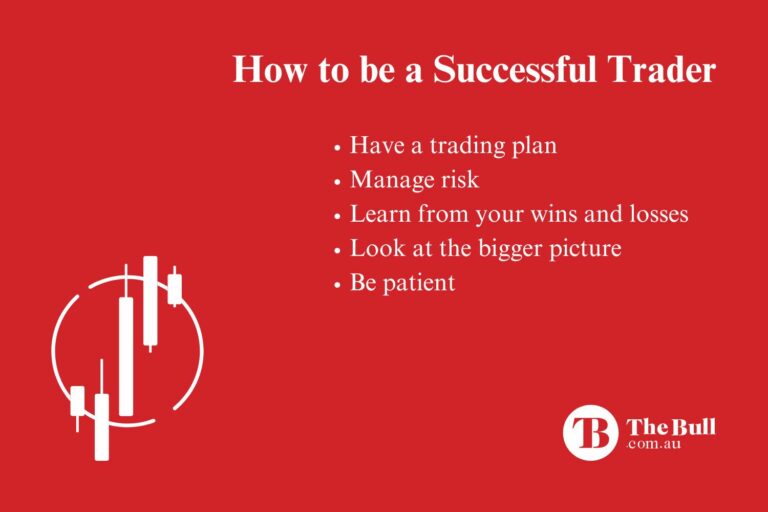What Successful Traders and Investors Do to Succeed?
At the beginning of the effort to learn the rules of successful share market, forex, or commodities investing, many would-be investors are asked if they plan to be traders or investors.

While both have the same goal – making a profit from buying and selling stocks – the strategy can be markedly different.
Top Australian Brokers
- Pepperstone - Trading education - Read our review
- IC Markets - Experienced and highly regulated - Read our review
- eToro - Social and copy trading platform - Read our review
Generally speaking, traders are most interested in short-term profits, buying and selling stocks in a matter of months, weeks, days, or even hours. Investors are looking for long-term profits, buying and holding for extended periods of time.
Traders can occasionally make long-term investments and investors can take short-term profits but both share a common dilemma. How much are they willing to pay and when will they be willing to buy?
To answer those questions and many more, both traders and investors need a trading plan.
Have a Trading Plan
Successful investors do not follow the herd moving en masse into or out or a stock. Investors and traders establish trading plans specifying preferred trading strategies, price points for entering and exiting a trade, money management, risk management, and periodic assessments of the plan.
The common bromide in the business world of plan your work and work your plan, applies to investing, regardless of your target market – equities, funds, contracts for difference, or forex.
The drawers of untold numbers of business people filled with plans ignored once created provide a lesson for investors and traders. The trading plan needs to be a working document, referred to before and after every buy and every sell. A solid trading plan begins with a general description of investing goals, morphing into specific details on steps needed to achieve those goals.
Establishing a trading plan starts with learning. Would-be investors and traders need to scour the internet for trading and investing information. While all investment categories are covered in the digital world, equities have the lead in educational and informational coverage.
Learning extends into information technology as well, beginning with AI (artificial intelligence) search engines and onto evaluating the trading technology and support available at the many online brokerage sites now available.
Manage Risk
Some eager investors and traders spend their learning efforts focusing on trading strategies, assessing online brokerage platforms, and even backtesting preferred strategies, all the while paying scant attention to their own risk tolerance.
Behavioral finance has uncovered a surprising truth – investors feel the pain of a losing trade much more than the satisfaction from a winning trade. Risk management begins with developing a portfolio mix of higher risk and lower risk stocks, depending on risk aversion or risk tolerance, and establishing stop loss parameters for exiting losing trades.
Learn from Your Mistakes – and Your Successes
Backtesting stock trades based on historical data can be essential in developing a trading plan. Most online brokerage sites have backtesting software with which you can experiment placing trades on targeted stocks using different trading strategies and different entry and exit points in prior time periods. Some sites also offer “ practice trading’ for experimentation without using real money.
Backtesting can pave the way for including formal steps for assessing both successful and unsuccessful trades in a well developed trading plan. The adage about those who do not learn from history are condemned to repeat it holds true for investing and trading.
While some investors plunge forward with new targets, the wise take time to evaluate what worked and what did not.
Look at the Bigger Picture
Because of the concentrated effort on short-term trades, trading requires a greater time commitment than long-term investing. Some traders consider trading to be a full-time job, others a part-time job suitable for after-hours effort.
The bigger context of the kind of life a potential trader or investor leads should be at the forefront of establishing a trading plan. It is unrealistic for someone without the time and temperament to approach short-term buying and selling equities to develop a trading plan more suitable for trading than investing.
In the business world, sometimes the best laid out plans fail, with planners reluctant to trash the plan and start over. The context is the same for trading and investing. If it is not working, start over.
The money management side of trading comes into play, as investors and traders can be faced with the dismaying fact their allocation of capital has been woefully insufficient.
Changes in global and domestic economic conditions are additional contextual issues to consider. All trading plans should have a formal review point established. For investors this might be annually or longer and for traders this might be quarterly or shorter. The point is factor into the plan a point at which investors and traders can evaluate what parts or the plan are working and what parts are not.
Be Patient
Some investors and traders are eager to jump into their preferred market, hitting the ground running at a frenetic pace. Prudence suggests another adage – Rome was not built in a day. If the plan’s overall goal calls for a portfolio of ten or more investments, finding ten candidates and buying all in short order removes the opportunity to learn from successes and failures to improve performance gradually over time.
The be patient advice also applies to the learning curve through which investors and traders progress to get ready to begin investing. People with some financial background are likely to learn at a faster pace than people with little or any background. The caveat is do not rush your learning.
A cardinal rule for investing of any kind is to risk only what you can afford to lose. This requires extreme patience when confronted with that elusive “once in a lifetime opportunity.” Getting in “on the ground floor” only makes sense when you can afford the losses should the ground collapse.
Practicing patience is a way to avoid getting sucked into the two emotions driving the actions of far too many investors – fear and greed. This is often easier said than done as the herd stampedes in a frenzy, tempting you to follow the herd even if the target investment violates the principles laid out in the trading plan. Stick to the plan.
One capital allocation tip in the trading plan that can curb impatience is a fixed percentage of available capital to be applied to a trade.
Success in financial investing or trading is not a matter of luck. It requires intensive learning of the rules of the game along with development of a specific trading plan, beginning with the overall goals of the investor or trader, the type of market in which to invest, determining entry and exit points for investments, and money and risk management strategies





